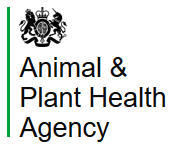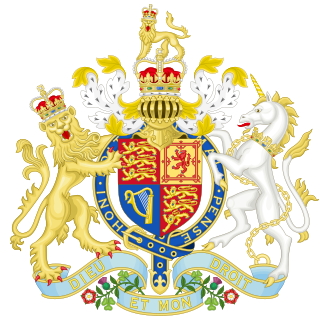Related Research Articles

The Department for Environment, Food and Rural Affairs (Defra) is a ministerial department of the government of the United Kingdom. It is responsible for environmental protection, food production and standards, agriculture, fisheries and rural communities in the entire United Kingdom. Concordats set out agreed frameworks for cooperation, between it and the Scottish Government, Welsh Government and Northern Ireland Executive, which have devolved responsibilities for these matters in their respective nations.

Influenza A virus (IAV) is the only species of the genus Alphainfluenzavirus of the virus family Orthomyxoviridae. It is a pathogen with strains that infect birds and some mammals, as well as causing seasonal flu in humans. Mammals in which different strains of IAV circulate with sustained transmission are bats, pigs, horses and dogs; other mammals can occasionally become infected.

Avian influenza, also known as avian flu or bird flu, is a disease caused by the influenza A virus, which primarily affects birds but can sometimes affect mammals including humans. Wild aquatic birds are the primary host of the influenza A virus, which is enzootic in many bird populations.

Influenza A virus subtype H5N1 (A/H5N1) is a subtype of the influenza A virus, which causes the disease avian influenza. It is enzootic in many bird populations, and also panzootic. A/H5N1 virus can also infect mammals that have been exposed to infected birds; in these cases, symptoms are frequently severe or fatal.

The Pirbright Institute is a research institute in Surrey, England, dedicated to the study of infectious diseases of farm animals. It forms part of the UK government's Biotechnology and Biological Sciences Research Council (BBSRC). The institute employs scientists, vets, PhD students, and operations staff.
The Veterinary Medicines Directorate (VMD) is an Executive Agency of the Department for Environment, Food and Rural Affairs (Defra) seeking to protect public health, animal health, the environment and promoting animal welfare by assuring the safety, quality and efficacy of veterinary medicines in the United Kingdom.

An influenza pandemic is an epidemic of an influenza virus that spreads across a large region and infects a large proportion of the population. There have been five major influenza pandemics in the last 140 years, with the 1918 flu pandemic being the most severe; this is estimated to have been responsible for the deaths of 50–100 million people. The 2009 swine flu pandemic resulted in under 300,000 deaths and is considered relatively mild. These pandemics occur irregularly.

Canine influenza is influenza occurring in canine animals. Canine influenza is caused by varieties of influenzavirus A, such as equine influenza virus H3N8, which was discovered to cause disease in canines in 2004. Because of the lack of previous exposure to this virus, dogs have no natural immunity to it. Therefore, the disease is rapidly transmitted between individual dogs. Canine influenza may be endemic in some regional dog populations of the United States. It is a disease with a high morbidity but a low incidence of death.

The global spread of H5N1 in birds is considered a significant pandemic threat.

The global spread of H5N1 in birds is considered a significant pandemic threat.

The 2007 Bernard Matthews H5N1 outbreak was an occurrence of avian influenza in England caused by the H5N1 subtype of Influenza virus A that began on 30 January 2007. The infection affected poultry at one of Bernard Matthews' farms in Holton in Suffolk. It was the third instance of H5N1-subtype detected in the United Kingdom and a range of precautions were instituted to prevent spread of the disease including a large cull of turkeys, the imposition of segregation zones, and a disinfection programme for the plant.
Animal Health was a UK government executive agency primarily responsible for ensuring that farmed animals in Great Britain were healthy, disease-free and well looked after.
Deborah Reynolds CB served as the Chief Veterinary Officer (CVO) of the United Kingdom from March 2004 until she retired in November 2007. She is usually referred to as Debby Reynolds, or less often as Deborah Reynolds.
Dr. Simon Carpenter, Head of the Entomology and Modelling Group in the Vector-borne Diseases Programme at the UK Biotechnology and Biological Sciences Research Council Institute for Animal Health’s Pirbright Laboratory in Woking, Surrey, is an entomologist who was awarded the first Rooker Prize in 2009 in recognition of his research on biting midges that transmit bluetongue virus (BTV), the causative agent of bluetongue disease, an important orbivirus disease of ruminants.

The Animal and Plant Health Agency (APHA), formerly known as the Animal Health and Veterinary Laboratories Agency (AHVLA), is an executive agency of the Department for Environment, Food and Rural Affairs (Defra) of the United Kingdom.
The National Centre for Foreign Animal Disease (NCFAD), located in the Canadian Science Centre for Human and Animal Health in Winnipeg, Manitoba, is part of the Canadian Food Inspection Agency’s National Centres for Animal Disease. NCFAD is co-located with the Public Health Agency of Canada’s National Microbiology Laboratory.

Christopher Michael Wathes was a British research scientist who specialised in agricultural and veterinary science.

Ilaria Capua is an Italian virologist and former politician, best known for her research on influenza viruses, particularly avian influenza, and her efforts promoting open access to genetic information on emerging viruses as part of pre-pandemic preparedness efforts.

The Animal Health Act 1981 is a piece of UK legislation that provides powers for the control of outbreaks of avian influenza and Newcastle disease. These powers were extended by a statutory instrument. It was amended by the Animal Health and Welfare Act 1984. It was amended in 2002 to provide more powers to deal with foot and mouth disease, a problem that in 2001 bedevilled herds during the Blair ministry.
The National Avian Influenza Reference Laboratory (NAIRL) is a BSL3 facility in Harbin, China.
References
- ↑ History of VLA, archived from the original on 14 January 2011, retrieved 19 December 2010
- ↑ Announcement of Animal Health and VLA merger on DEFRA website, archived from the original on 5 December 2010, retrieved 19 December 2010
- ↑ "About us". Defra. Archived from the original on 19 April 2012.